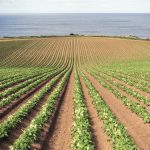Tag Archives Soil

COMMENT: Fertile land for growing vegetables is at risk — but a scientific discovery could turn the tide

$9 million invested to increase sustainability and competitiveness of Ontario farms

Critical Ground highlights the need for research during Canada’s Outdoor Farm Show

Critical Ground highlights the need for research during Canada’s Outdoor Farm Show

Compaction almost unavoidable during wet 2024 spring
It’s too early to fix most affected areas, best to wait until harvest

Senate report calls for soil strategy, national soil advocate
The two-year study recognizes conservation efforts over recent decades but finds there is more to be done

Prairie soil scientist and author Les Henry, 83
Henry's outreach to farmers spanned more than half a century

Temperatures are rising, but soil is getting wetter. Why?
Science Notes: Research finds precipitation, rather than temperature, explains soil moisture trends

Ruth Butt was a soil health champion
Proceeds from farm sale donated to Soil Conservation Council of Canada

Perspectives on farming in the Great Clay Belt
There are issues with infrastructure and soils as well as location


